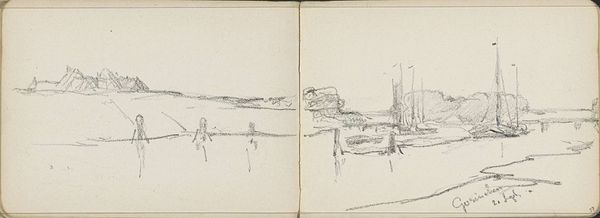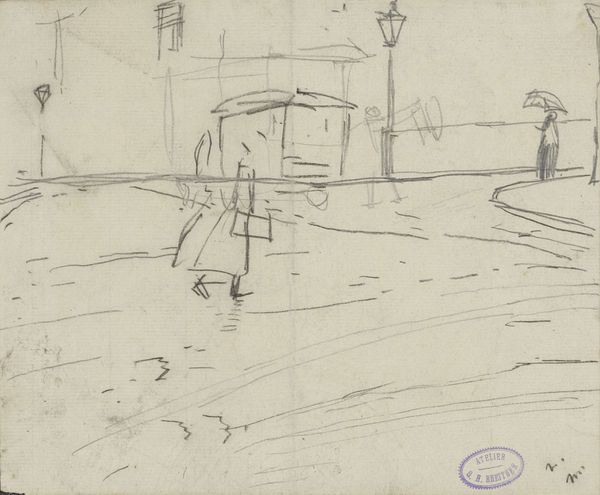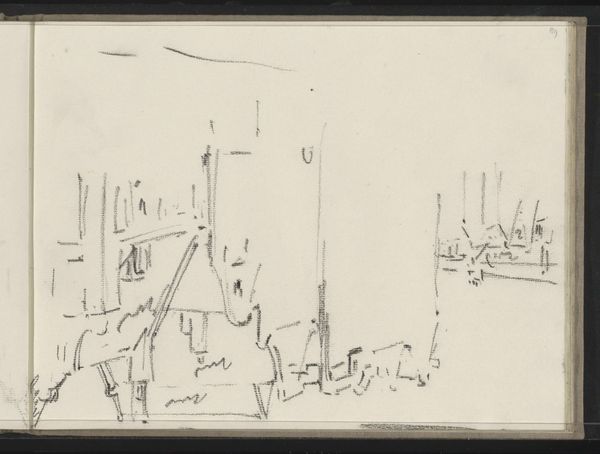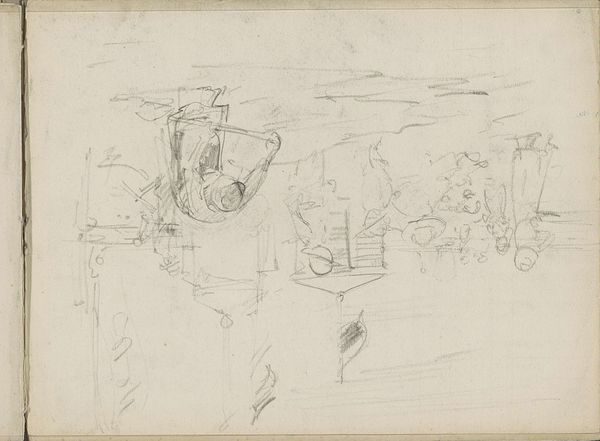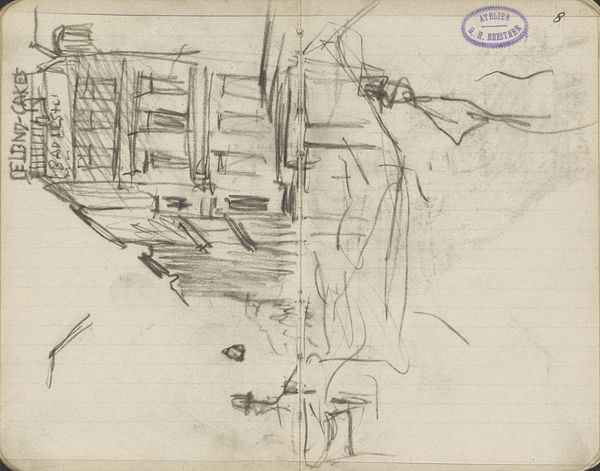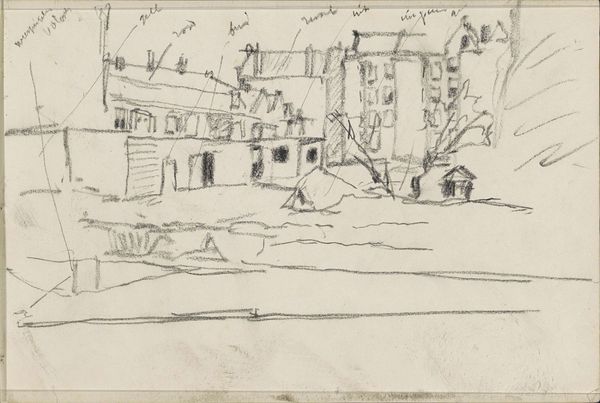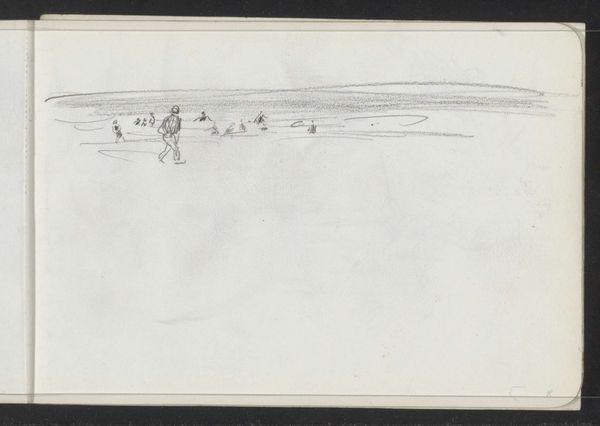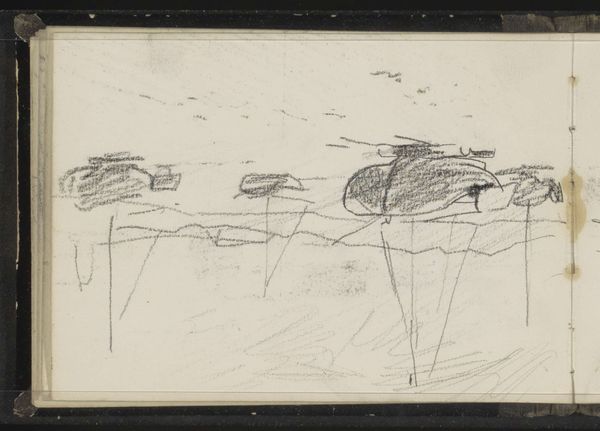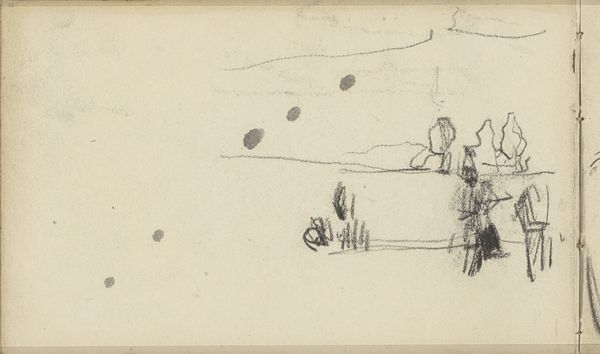
Copyright: Rijks Museum: Open Domain
Curator: Here we have "Huizen aan de Krom Boomssloot te Amsterdam," or "Houses on the Krom Boomssloot in Amsterdam," a pencil drawing from around 1897 by Willem Witsen, housed right here at the Rijksmuseum. Editor: It feels so ephemeral, like a half-remembered dream. There's an immediate sense of intimacy, a hushed stillness hanging over the water and buildings. Curator: Precisely! Note the economy of line, the artist's use of hatching to suggest depth and texture in the water and reflections. See how Witsen builds form through these precise gradations. It’s the core structural element. Editor: But beyond structure, there's this very human presence evoked. See the shadowy figure peering from the window? It speaks volumes, like a Dutch Golden Age painting hinting at the secrets and rhythms of daily life in Amsterdam. Curator: I'd suggest the figure is a mere accent. It contributes to the overall spatial composition by anchoring the right side of the architectural planes. More interesting is Witsen’s technical skill. The water’s surface, activated with subtle movements achieved through rapid strokes, functions almost as a compositional echo. Editor: But the reflections hint at more than just composition. They double and invert the familiar world above, creating a symbolic threshold between the visible and the unseen, the tangible and the remembered. Don't you think it suggests themes of transience and memory? Curator: Memory is inherent in every visual experience. My sense is Witsen explores a near-abstract play with forms. His work with light, mass, and void invites consideration of form devoid of symbolic weighting. Editor: Regardless of our approach, it is hard not to notice Witsen captured a uniquely powerful visual shorthand for a specific time and place. Curator: Indeed. Through the simple yet considered marks he was able to communicate an evocative sense of reality.
Comments
No comments
Be the first to comment and join the conversation on the ultimate creative platform.
